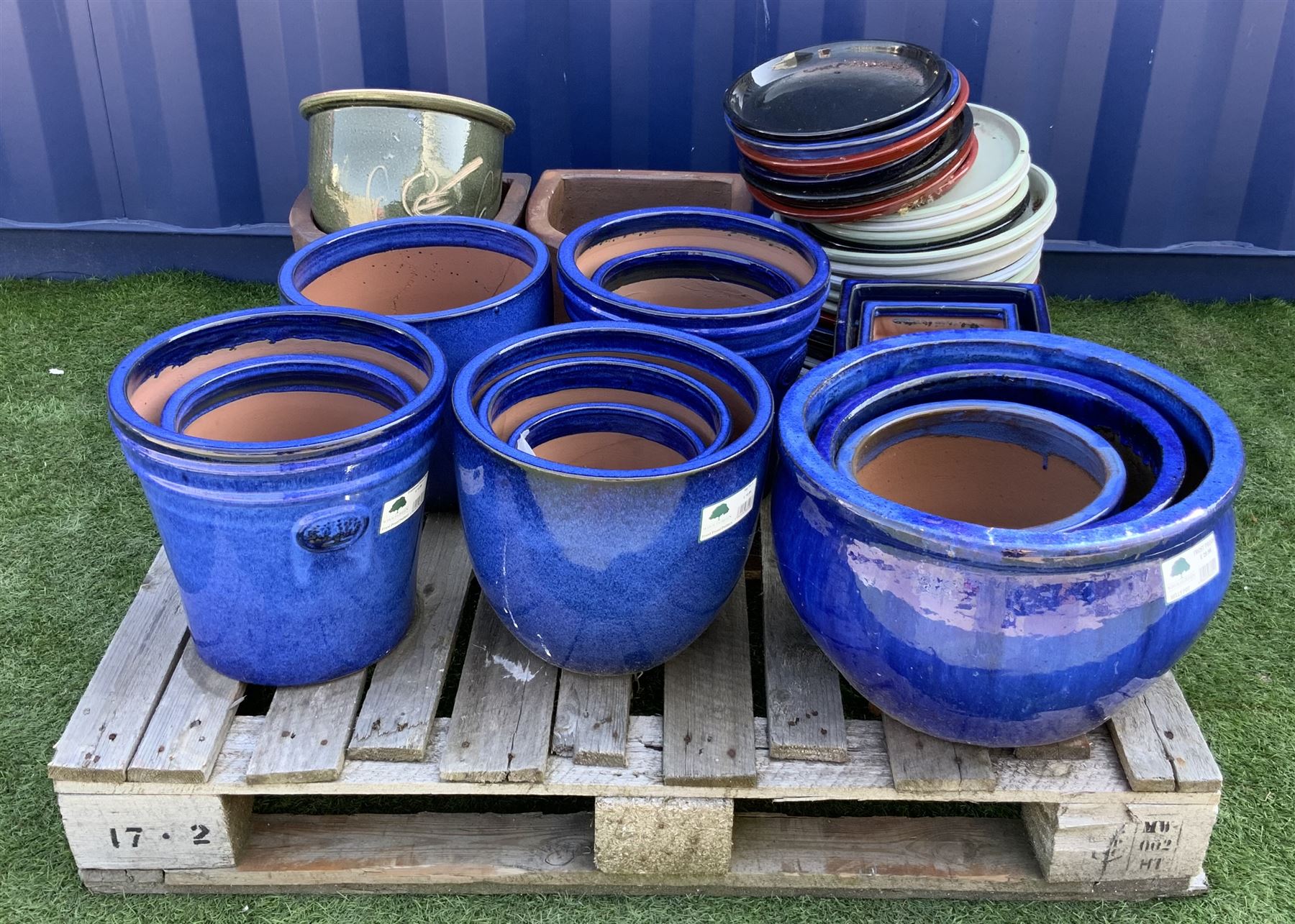Blue glazed plant pots are not just ordinary containers for your beloved plants; they are captivating works of art that seamlessly blend aesthetics and functionality. Their unique charm and versatility make them a perfect addition to any interior or exterior space, adding a touch of elegance and vibrancy to your surroundings.
The captivating beauty of blue glazed plant pots lies in their vibrant hues and glossy finish, which reflect light and create a mesmerizing effect. Whether you prefer a classic cobalt blue or a soft turquoise, there’s a shade to complement your personal style and décor. These pots come in various shapes and sizes, allowing you to find the perfect fit for your plants and living spaces.
Blue Glazed Plant Pots: Artistic and Practical Decor

Blue glazed plant pots are a beautiful and versatile addition to any home. The unique color and texture of the glaze add a touch of elegance and sophistication to any space, while the durability of the material makes them a practical choice for both indoor and outdoor use.
Visual Appeal of Blue Glazed Plant Pots
The blue glaze on these pots is created by adding cobalt oxide to the clay before it is fired. The cobalt oxide reacts with the clay to create a deep, rich blue color. The glaze is then applied to the pot and fired at a high temperature, which causes it to melt and fuse with the clay. The result is a beautiful, durable finish that is resistant to chipping and scratching.
Complementing Interior Design Styles
Blue glazed plant pots can complement a variety of interior design styles, from traditional to modern. The classic blue color of the glaze pairs well with both light and dark woods, and the glossy finish adds a touch of glamour to any space. Blue glazed plant pots are also a great way to add a pop of color to a neutral room.
Choosing the Right Size and Shape
When choosing a blue glazed plant pot, it is important to consider the size and shape of the plant you will be potting. The pot should be large enough to accommodate the plant’s roots, but not so large that it overwhelms the plant. The shape of the pot should also complement the plant’s growth habit. For example, a tall, narrow pot is a good choice for a plant with a vertical growth habit, while a wide, shallow pot is a good choice for a plant with a spreading growth habit.
Crafting Blue Glazed Plant Pots

Creating blue glazed plant pots is an art form that combines creativity with technical skill. The process involves preparing the clay, shaping the pot, applying the glaze, and firing it in a kiln. Let’s explore the techniques and materials used in crafting these beautiful and functional pieces.
Types of Clay
The type of clay used for blue glazed plant pots influences the pot’s durability, texture, and color. Common clays include:
- Earthenware clay: A porous clay that is fired at low temperatures (around 1000°C), resulting in a soft and absorbent finish.
- Stoneware clay: A denser clay that is fired at higher temperatures (around 1200°C), producing a more durable and less porous finish.
- Porcelain clay: A fine-grained clay that is fired at very high temperatures (around 1300°C), creating a strong and translucent finish.
Types of Glaze
The glaze is a thin layer of glass that is applied to the pot before firing. It provides a protective coating, enhances the color, and creates a smooth or textured surface. Common glazes used for blue glazed plant pots include:
- Clear glaze: A transparent glaze that allows the natural color of the clay to show through.
- Cobalt glaze: A blue glaze that is created by adding cobalt oxide to the glaze mixture.
- Turquoise glaze: A blue-green glaze that is created by adding copper oxide to the glaze mixture.
Achieving Different Shades and Textures
The shade and texture of the blue glaze can be varied by adjusting the firing temperature, the thickness of the glaze application, and the addition of other oxides or minerals. For example:
- Higher firing temperatures produce a more intense blue color.
- Thicker glaze applications create a more opaque finish.
- Adding iron oxide to the glaze mixture can create a greenish-blue hue.
Blue Glazed Plant Pots in Horticulture and Landscaping

Blue glazed plant pots are not only aesthetically pleasing but also offer several benefits for plant growth and health. The unique properties of blue glaze make these pots an excellent choice for horticulture and landscaping.
Benefits for Plant Growth and Health
The blue glaze on these pots reflects sunlight, reducing the amount of heat absorbed by the soil. This prevents overheating of the roots, which can be detrimental to plant growth. The reflective glaze also helps maintain optimal soil temperature, promoting root development and overall plant health.
Aesthetic Appeal in Gardens and Outdoor Spaces
Blue glazed plant pots add a touch of elegance and sophistication to any garden or outdoor space. The vibrant blue hue complements various plant species, creating a visually appealing contrast. These pots can be used to highlight focal points, create borders, or add a splash of color to patios and balconies.
Comparison to Other Plant Containers
Compared to other types of plant containers, blue glazed plant pots offer several advantages:
| Characteristic | Blue Glazed Plant Pots | Other Containers (e.g., Terracotta, Plastic) |
|---|---|---|
| Durability | Highly durable due to the glazed surface | Can be fragile or susceptible to cracking |
| Drainage | Good drainage due to the porous nature of the glaze | Drainage may vary depending on material |
| Insulation | Provides insulation against temperature fluctuations | May not provide sufficient insulation |